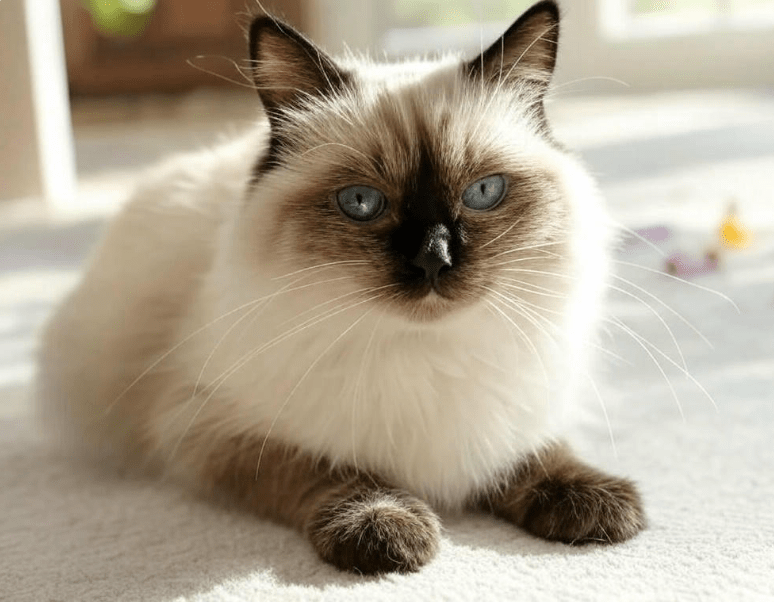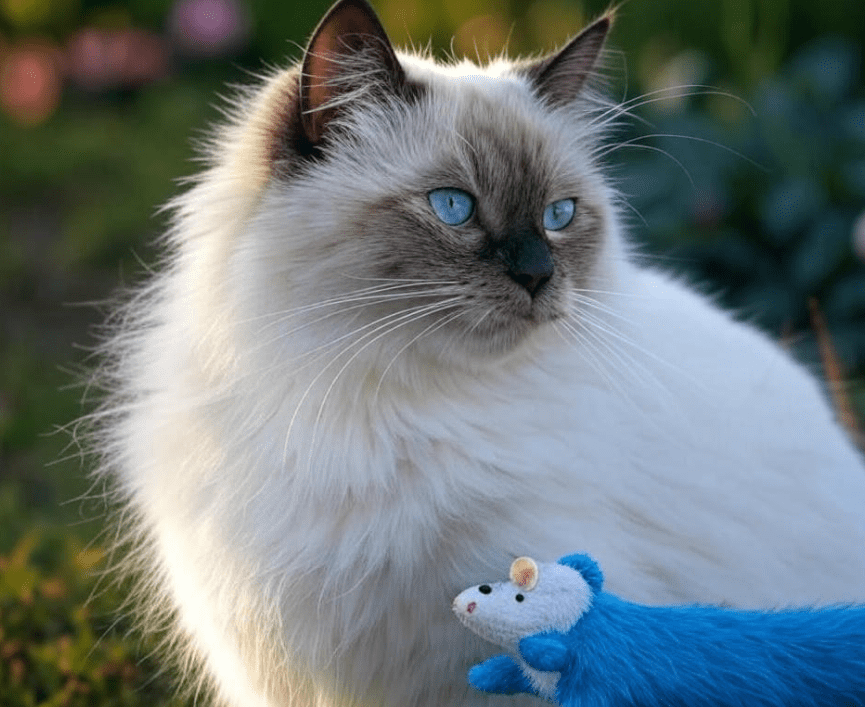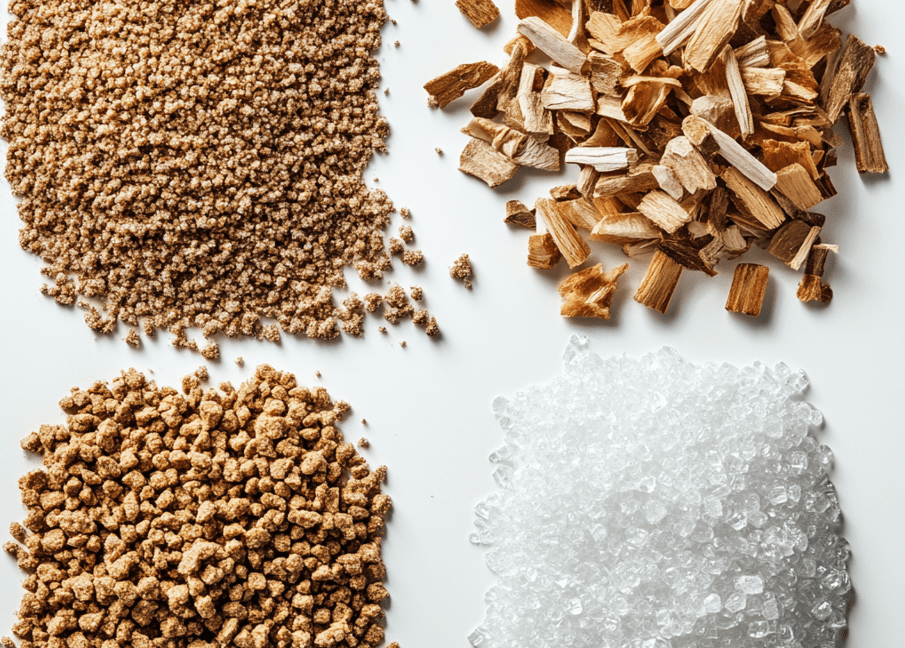
Ragdoll cats are beloved for their stunning blue eyes, silky fur, and affectionate personalities. However, their long, plush coats require regular care to keep them healthy and comfortable. Choosing the right grooming tools for Ragdoll cats is essential for maintaining their luxurious fur and ensuring their well-being. In this comprehensive guide, we’ll explore the five must-have grooming tools every Ragdoll cat owner needs, along with tips on how to use them effectively, why they matter, and how to make grooming a stress-free experience for both you and your feline friend.
Why Grooming Is Essential for Ragdoll Cats
Ragdolls have semi-long, dense coats that are prone to matting, shedding, and hairballs. Regular grooming not only keeps their fur looking pristine but also:
Prevents Mats and Tangles: Mats can cause discomfort and skin issues if left untreated.
Reduces Shedding: Grooming minimizes loose fur around your home.
Promotes Skin Health: Brushing stimulates blood flow and distributes natural oils for a healthy coat.
Strengthens Bonding: Grooming sessions build trust between you and your Ragdoll.
Prevents Hairballs: Regular brushing reduces the amount of fur your cat ingests while self-grooming.
Given their large size (10–20 pounds) and thick fur, Ragdolls require specialized tools designed to handle their unique coat. Below, we dive into the five essential grooming tools every Ragdoll owner should have in their arsenal.
1. Slicker Brush
Why It’s Essential
A slicker brush is a must-have for Ragdoll cats due to their dense, semi-long coats. This tool features fine, short wires close together on a flat or slightly curved surface, making it ideal for removing loose fur, preventing mats, and smoothing the coat.

Features to Look For
Soft, Flexible Bristles: Choose a brush with gentle bristles to avoid irritating your Ragdoll’s sensitive skin.
Self-Cleaning Mechanism: Some slicker brushes have a button to release collected fur, making cleanup easier.
Ergonomic Handle: A comfortable grip reduces hand fatigue during longer grooming sessions.
Large Brush Head: A wider brush head covers more surface area, which is ideal for a Ragdoll’s large body.
How to Use It
Frequency: Brush your Ragdoll 2–3 times per week to prevent mats and reduce shedding.
Technique: Use gentle, short strokes in the direction of hair growth. Start at the head and work toward the tail, paying extra attention to areas prone to matting, like the belly, armpits, and hindquarters.
Tip: If you encounter a mat, hold the fur near the skin to avoid pulling and gently work through it with the brush.
Recommended Use
For Ragdolls, a slicker brush is the go-to tool for daily maintenance. It’s especially effective during shedding seasons (spring and fall) when your Ragdoll’s coat may shed more heavily.
2. Wide-Tooth Comb
Why It’s Essential
A wide-tooth comb is perfect for detangling and smoothing your Ragdoll’s coat without causing discomfort. It’s particularly useful for working through minor mats and ensuring the undercoat remains tangle-free.
Features to Look For
Stainless Steel Teeth: Durable and resistant to rust, ideal for long-term use.
Rounded Teeth: Prevent scratching or irritating your Ragdoll’s skin.
Dual-Sided Design: Some combs have both wide and narrow teeth for versatility.
Comfortable Grip: A non-slip handle makes it easier to control the comb.
How to Use It
Frequency: Use the comb 1–2 times per week or as needed for detangling.
Technique: Start with the wide-tooth side to gently work through tangles, then switch to the narrower side for finer grooming. Comb in small sections, starting at the tips of the fur and moving toward the skin to avoid pulling.
Tip: For stubborn mats, apply a pet-safe detangling spray before combing to loosen the fur.
Recommended Use
The wide-tooth comb is a great follow-up to the slicker brush, ensuring your Ragdoll’s coat is smooth and free of knots. It’s also useful for grooming around sensitive areas like the face and tail.
3. Undercoat Rake
Why It’s Essential
Ragdolls have a thick undercoat that can trap loose fur, leading to matting and hairballs. An undercoat rake is designed to penetrate deep into the coat to remove dead hair from the undercoat without damaging the topcoat.
Features to Look For
Wide, Rounded Pins: Ensure the pins are spaced appropriately to glide through the coat without pulling.
Adjustable Pin Length: Some rakes allow you to adjust the depth for different coat thicknesses.
Sturdy Construction: A metal rake is more durable than plastic.
Comfortable Handle: Look for a cushioned or ergonomic grip for ease of use.
How to Use It
Frequency: Use the undercoat rake once a week or during heavy shedding periods.
Technique: Gently drag the rake through the coat in the direction of hair growth, applying light pressure. Focus on areas with dense fur, like the back, sides, and hindquarters.
Tip: Avoid overusing the rake, as it can thin the undercoat if used too frequently.
Recommended Use
The undercoat rake is a seasonal must-have for Ragdolls, especially during spring and fall when shedding is at its peak. It’s also ideal for older Ragdolls who may groom less effectively on their own.
4. Nail Clippers
Why It’s Essential
Regular nail trimming prevents overgrown claws, which can cause discomfort or get caught in furniture. Ragdolls, with their large paws, need sturdy, precise nail clippers to keep their claws in check.

Features to Look For
Scissor or Guillotine Style: Scissor-style clippers are easier for beginners, while guillotine clippers offer precision for experienced owners.
Sharp, Stainless Steel Blades: Ensure clean cuts without splitting the nail.
Safety Guard: A guard prevents cutting too close to the quick (the sensitive part of the nail).
Non-Slip Handle: Provides better control during trimming.
How to Use It
Frequency: Trim your Ragdoll’s nails every 2–4 weeks, depending on growth.
Technique: Hold your Ragdoll’s paw gently and press the pad to extend the claws. Clip only the sharp tip of the nail, avoiding the pink quick. If unsure, trim small amounts at a time.
Tip: Keep styptic powder nearby in case you accidentally cut the quick to stop bleeding.
Recommended Use
Nail clippers are essential for maintaining your Ragdoll’s paw health and preventing scratches. Pair trimming sessions with treats to make the experience positive.
5. Pet-Safe Grooming Wipes
Why It’s Essential
Grooming wipes are a convenient way to keep your Ragdoll’s coat clean between baths, remove dander, and freshen up their fur. They’re especially useful for Ragdolls, who may get dirt or debris in their long coats.
Features to Look For
Hypoallergenic Formula: Ensures the wipes are safe for your Ragdoll’s sensitive skin.
Moisturizing Ingredients: Look for wipes with aloe or oatmeal to soothe the skin.
Fragrance-Free Options: Avoid strong scents that may irritate your cat.
Large Size: Bigger wipes cover more of your Ragdoll’s body efficiently.
How to Use It
Frequency: Use grooming wipes as needed, typically 1–2 times per week or after outdoor play.
Technique: Gently wipe the coat in the direction of hair growth, focusing on areas like the hindquarters, paws, and tail. Avoid the eyes and ears.
Tip: Use wipes to clean minor stains or sticky spots, such as food residue around the mouth.
Recommended Use
Grooming wipes are a quick solution for maintaining your Ragdoll’s cleanliness, especially for cats who dislike baths. They’re also great for travel or grooming on the go.
Additional Grooming Tips for Ragdoll Cats
Beyond the five essential tools, these tips will help you create a successful grooming routine for your Ragdoll:
Start Grooming Early
Introduce grooming tools to your Ragdoll kitten as early as possible to build positive associations. Use treats, praise, and short sessions to make grooming enjoyable.
Create a Calm Environment
Ragdolls are sensitive to stress, so groom in a quiet, comfortable space. Play soft music or use a calming pheromone diffuser to relax your cat.

Check for Skin Issues
While grooming, inspect your Ragdoll’s skin for redness, bumps, or parasites. Early detection of issues like fleas or dermatitis can prevent discomfort.
Bathe Sparingly
Ragdolls don’t need frequent baths, but when necessary, use a cat-safe shampoo and lukewarm water. Ensure the coat is fully dry to prevent matting.
Monitor Shedding Patterns
Ragdolls shed moderately year-round, with heavier shedding in spring and fall. Adjust your grooming frequency and tool use based on their shedding cycles.
Reward Your Ragdoll
After each grooming session, offer treats or playtime to reinforce positive behavior. Ragdolls respond well to affection, making grooming a bonding opportunity.
How to Choose High-Quality Grooming Tools
With so many grooming tools on the market, selecting the best ones for your Ragdoll can feel overwhelming. Here’s what to consider:
Material Durability: Opt for stainless steel, high-quality plastics, or sturdy fabrics that withstand regular use.
Pet-Safe Design: Ensure tools are free of sharp edges, toxic materials, or small parts that could be chewed off.
Brand Reputation: Research brands with positive reviews from Ragdoll or long-haired cat owners.
Ease of Cleaning: Choose tools that are easy to clean or have self-cleaning features to save time.
Budget: Invest in mid-to-high-quality tools ($10–$50 per tool) for better performance and longevity.
Common Grooming Mistakes to Avoid
To keep your Ragdoll comfortable and healthy, steer clear of these pitfalls:
Brushing Too Aggressively: Harsh brushing can irritate the skin or cause stress. Use gentle, steady strokes.
Ignoring Mats: Small tangles can quickly become painful mats. Address them promptly with a comb or detangling spray.
Cutting Nails Too Short: Trimming into the quick is painful and can cause bleeding. Always cut conservatively.
Using Human Products: Human shampoos, wipes, or brushes can harm your Ragdoll’s skin and coat.
Skipping Regular Grooming: Inconsistent grooming leads to matting, shedding, and hairballs, especially in Ragdolls.
Grooming Tools for Special Ragdoll Needs
Ragdolls of different ages or health conditions may require tailored grooming approaches:
Kittens: Use smaller, softer tools like a gentle slicker brush to acclimate them to grooming.
Senior Ragdolls: Opt for lightweight tools and focus on comfort, as older cats may have arthritis or reduced mobility.
Ragdolls with Skin Sensitivities: Choose hypoallergenic wipes and brushes with extra-soft bristles to avoid irritation.
Show Ragdolls: Invest in premium tools, like a high-end slicker brush or professional-grade comb, to maintain a flawless coat.
Budget Considerations: Finding Value Without Compromising Quality
Grooming tools for Ragdolls range from $5 to $50 per item, depending on brand and features. While it’s tempting to choose the cheapest options, investing in quality tools ensures better results and durability. Here’s how to balance cost and value:
Starter Kits ($30–$60): Many pet brands offer grooming kits with a brush, comb, and nail clippers, ideal for new Ragdoll owners.
Mid-Range Tools ($10–$25): These offer a good balance of quality and affordability for daily grooming.
Premium Tools ($25–$50): High-end slicker brushes or self-cleaning tools are worth the investment for frequent use.
Sales and Bundles: Check retailers like Chewy, Amazon, or PetSmart for discounts or multi-tool deals.
Where to Buy Grooming Tools for Ragdolls
You can find high-quality grooming tools at:
Online Retailers: Chewy, Amazon, and Petco offer a wide selection with customer reviews to guide your choice.
Pet Specialty Stores: PetSmart or local pet boutiques often carry premium brands.
Veterinary Clinics: Some vets sell grooming tools tailored for specific breeds like Ragdolls.
Grooming Shows or Expos: These events feature professional-grade tools and allow you to test them before buying.
Always read reviews from other Ragdoll owners to ensure the tools are effective for long-haired, large cats.
DIY Grooming Tool Alternatives
If you’re on a tight budget, you can create makeshift grooming tools at home, though they may not be as effective as store-bought options:
Slicker Brush Alternative: Use a clean, soft-bristled human hairbrush (not used for humans) for light brushing.
Comb Alternative: A clean, wide-tooth human comb can work for detangling, but ensure the teeth are rounded.
Wipes Alternative: Dampen a soft, clean cloth with water and a drop of pet-safe shampoo for spot cleaning.
For nail trimming and undercoat raking, always use proper pet tools to avoid injury or discomfort.
Conclusion

Grooming your Ragdoll cat is more than just maintaining their beautiful coat—it’s about ensuring their comfort, health, and happiness. The five essential grooming tools for Ragdoll cats—a slicker brush, wide-tooth comb, undercoat rake, nail clippers, and pet-safe grooming wipes—cover all aspects of their grooming needs. By choosing high-quality tools, establishing a regular grooming routine, and tailoring your approach to your Ragdoll’s personality and needs, you can keep their coat pristine and strengthen your bond.
Invest in these tools, follow our tips, and make grooming a positive experience for your Ragdoll. With the right care, your feline friend will look and feel their best, ready to charm everyone with their stunning appearance and loving nature.




